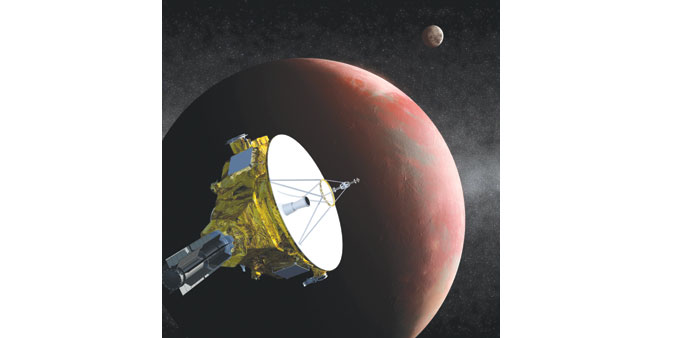This December 1, 2014 file artist’s concept courtesy of Nasa/Johns Hopkins University Applied Physics Laboratory/Southwest Research Institute (JHUAPL/SwRI) shows the New Horizons spacecraft as it approaches Pluto and its three moons.
Reuters/Cape Canaveral, Florida
Nasa scientists were working yesterday to revive the New Horizons spacecraft after it suffered a computer malfunction just nine days before it was due to fly past Pluto.
The probe has been barreling toward the dwarf planet and its primary moon, Charon, since January 2006.
On Saturday, an unknown glitch caused New Horizons to switch to a back-up computer, which triggered an 81-minute break in radio communications with mission controllers at the Johns Hopkins University Applied Physics Laboratory in Laurel, Maryland, Nasa said in a status report.
“Full recovery is expected to take from one to several days,” Nasa said. “New Horizons will be temporarily unable to collect science data during that time.”
The work is complicated by the 4.5 hours it takes to send a set of signals to the spacecraft, which is nearly 3bn miles (5bn km) from Earth.
Like Nasa’s early Mariner, Pioneer and Voyager missions that first explored the solar system, the New Horizons spacecraft is designed to conduct science on the fly as it passes within 7,800 miles (12,500km) of Pluto on July 14.
Pluto’s gravity is so weak that it would take a huge amount of fuel for a spacecraft to brake and put itself into orbit.
New Horizons spent most of its nine-year journey to Pluto in hibernation. It was revived in January to begin collecting navigation and science data.



